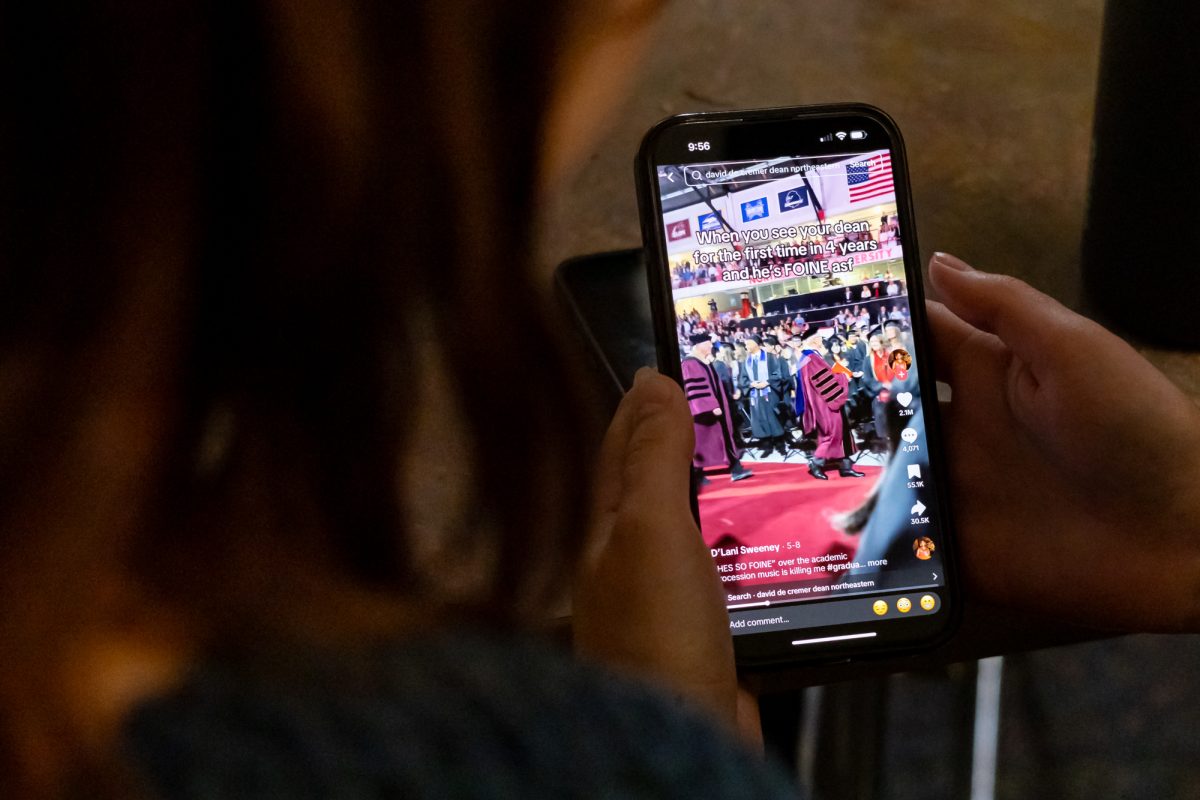By Katherine Landergan, News Staff
In Shakespearean times, only men could act in plays, requiring male actors to take on female roles. In Northeastern’s theatre production of “Richard III,” men are still playing the parts of women. But this time, women dominate the stage because they have taken on the numerous male characters in this play.
“I had never seen a Shakespeare play in which the genders had been reversed,” said Antonio Ocampo-Guzman, the show’s director and a theatre professor at Northeastern. “There were only four female roles, and I thought, maybe I can just get away with it.”
Ocampo-Guzman said the main reason he had males play females and vice versa was out of practicality. At Northeastern, the audition pool tends to be four females for every male, he said, and directors are always scrambling to find male actors. Also, he thought gender switching would be a good challenge for the actors.
“We had to play up to the stereotypes, and then pull it back so it is more realistic,” said Anita Shriver, a middler theater major who plays Richard III.
Ocampo-Guzman said his creative choice was kept secret from those auditioning, and that he didn’t announce it until the cast list was posted. A few students shared that they would have liked full disclosure from the beginning, but ultimately everyone cast accepted their roles. He also said the women had a relatively easy time taking on the opposite gender, but that the men were much more difficult to coach.
“I think men have many more stereotypes in their head as to how women behave,” he said. “It is a little more acceptable for women to wear pants and boots than for men to wear dresses.”
“Richard III” tells a the story of Richard, Duke of York, his ascension to the throne, which he takes from his brother, and his brief reign of power in England. This play is a tale of jealousy and ambition – as with other classic Shakespeares, it involves free will, fatalism, murder and ghosts.
Shriver said most of the rehearsal process was focused on how to play a character of the opposite gender. She and the other actors spent a lot of time on physicality, specifically with walking and finding the right center of gravity. But for Shriver, taking on the role of a man was secondary to the fact that she was playing Richard III.
“It’s such an iconic role,” she said. “The fact that he’s a man, it didn’t faze me as much.”
Shriver said she drew inspiration for her character from a multitude of places, mostly fashion photography. Models, she said, tend to pose a bit bent and out of place, and looking at these pictures helped her walk as Richard III, who is crippled.
The show focuses on including the audience, because that is how Shakespeare originally intended his shows to be performed, Ocampo-Guzman said. During the production, actors enter from the back of the theater and sometimes even walk into the audience. The performance is also quite simulating to the senses: The lighting is sometimes disorienting, and sounds occasionally come from the back of the audience.
Ocampo-Guzman said he chose the play because Richard III is one of his favorite characters and he always wanted to investigate it further. He also said he is very familiar with the Northeastern theatre students, and thought this show would both interest and benefit them.
“Although the text is not complicated, the characters and situations are rich and deep and that is certainly the challenge for them,” he said. “Shakespeare is a really great training realm for young actors.”
Northeastern Theatre Department’s production of “Richard III” runs through March 27 at the Studio Theater on the first floor of Curry Student Center. Tickets can be purchased at the Ell Hall box office or through the myNEU Portal. Tickets cost $10 to $15, but students get a $2 discount with a Husky Card.








